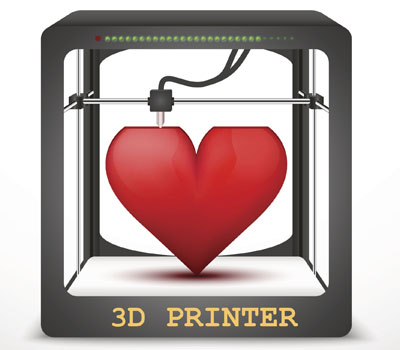Centre for Law and Genetics
3D Printing
Delivering on the Commercial Promise of 3D Printing: Identifying Legal Barriers
UTAS Collaborators: Professor Dianne Nicol
Funding Source: University of Tasmania - Research Enhancement Grant Scheme (REGS)
Commencement Date: 2014
Project Status: Completed (2015)
Researchers
Research Background
 3D printing, also known as additive manufacturing, is a process that can produce physical objects from digital inputs and raw materials. In contrast to more orthodox manufacturing techniques that create shapes by subtracting material, e.g. carving, cutting and drilling, 3D printing operates by adding successive layers of material to create shapes. The digital inputs for 3D printing are created using computer aided design (CAD) or by using a 3D scanner. 3D printing can be completed using a variety of materials, including metals and plastics (Doherty 2012). This futuristic technology has existed in various forms since the 1980s, however with the price of 3D printers decreasing since 2010, it has become increasingly accessible to the general public.
3D printing, also known as additive manufacturing, is a process that can produce physical objects from digital inputs and raw materials. In contrast to more orthodox manufacturing techniques that create shapes by subtracting material, e.g. carving, cutting and drilling, 3D printing operates by adding successive layers of material to create shapes. The digital inputs for 3D printing are created using computer aided design (CAD) or by using a 3D scanner. 3D printing can be completed using a variety of materials, including metals and plastics (Doherty 2012). This futuristic technology has existed in various forms since the 1980s, however with the price of 3D printers decreasing since 2010, it has become increasingly accessible to the general public.
3D printing offers many possibilities to rapidly develop prototypes and customise manufacturing. It will invariably have an impact in terms of manufacturing spaces: offices, garages and even bedrooms are becoming the new 'factory floors'. In Australia, 3D printing has been taken up by many innovators and manufacturers, including architects, jewellers and medical device manufacturers (University of Melbourne; ABC News 2013).
An important question to ask is how might copyright, designs, patent and trade mark, or intellectual property (IP) laws more generally apply in this context. In other words, how will IP laws affect not only those printing objects, but also those who created the original products or designs? Ultimately, there is a real issue as to whether these laws will impede or aid the utilisation of this innovative technology.
About the Project
The aim of this project was to identify the legal impediments to wider adoption of 3D printing technology in Australia. Interviews and surveys of commercial entities who are adopting 3D printing technology at this early stage in Australia, provided qualitative data to enable assessment of the legal issues impacting, or anticipated to impact, the full realisation of benefits from 3D printing in Australia.
